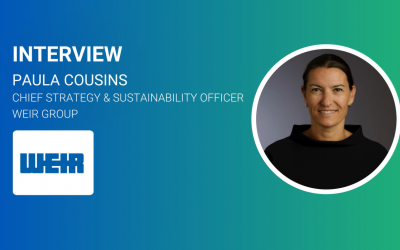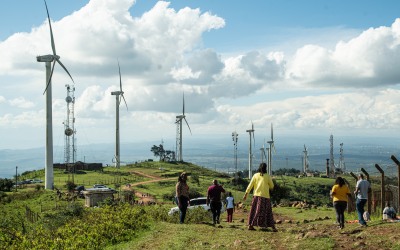James Mcmahon on how S&P Global Sustainable1 ensures transparency when modelling data
James Mcmahon, from The Climate Service, now a part of S&P Global, talks to Climate Action about how when modelling data it is vital to consider all the costs related to climate change, both the costs of action and inaction.
_500_500_80.jpg)
When modelling the financial impacts of climate change how important is it to include both physical and transition risks?
Our customers tell us it's critical. The analogy is that they'd like to get their fruits and their vegetables from the same shop. Physical and transition risks are highly interrelated, so it makes sense to consider them together across different scenarios, using a consistent methodology. In general, the scenarios that lead to lower transition risk also lead to higher physical risk—and vice versa. It's vital to consider all the potential costs related to climate change, both the costs of action and inaction.
How does S&P Global Sustainable1 ensure transparency in the data?
It's important to bake transparency into every piece of the framework—we call it a glass box rather than a black box. If customers are making financial decisions with the data, they deserve to know where it came from, what we did with it, and how to interpret the results. We start with peer-reviewed scientific data when it's available, we share our methodology for transforming the data, and share our models.
What are the hurdles which need to be overcome to offer adequate coverage for physical risks when accounting for impact of climate on investments?
- Data. We often hear the refrain, "More data!" While in general more data is usually better, it's important to be specific about data needs. Specifically, physical risk analysis is based on asset-level data (i.e. what a company owns, where it is, and how it generates value). The field is rapidly enhancing both the breadth of coverage and the depth of detail on asset-level data.
- Models. To fully integrate physical risk into financial decisions, the model outputs must be in financial terms. The frontiers of research and development for financial models include topics such as merging macro and microeconomic analysis, modelling adaptation and resilience, full probability distribution, confidence intervals, thresholds, and tipping points, and many more.
Should investors also consider physical climate risks at portfolio level and integrate climate issues into the broader risk assessment process?
Our mission is to help embed climate change into every financial decision on Earth. Financial decisions are made at the portfolio level, the company level, and sometimes at the level of an individual asset. This is why we model at the lowest possible level--individual data centers, vineyards, manufacturing facilities, etc.--and aggregate up to the level that's useful for the customer. Should investors consider climate-related financial risks? If they're material, then they not only can, but they must. But to understand if the risks are material requires doing the math.
James Mcmahon spoke at the Sustainable Investment Forum North America in September, which brought together asset owners and managers, ratings agencies, banks, UN and Government policymakers, investors, development banks, think tanks, and NGOs committed to driving forward the sustainable finance agenda. You can watch all sessions on demand for free here.






